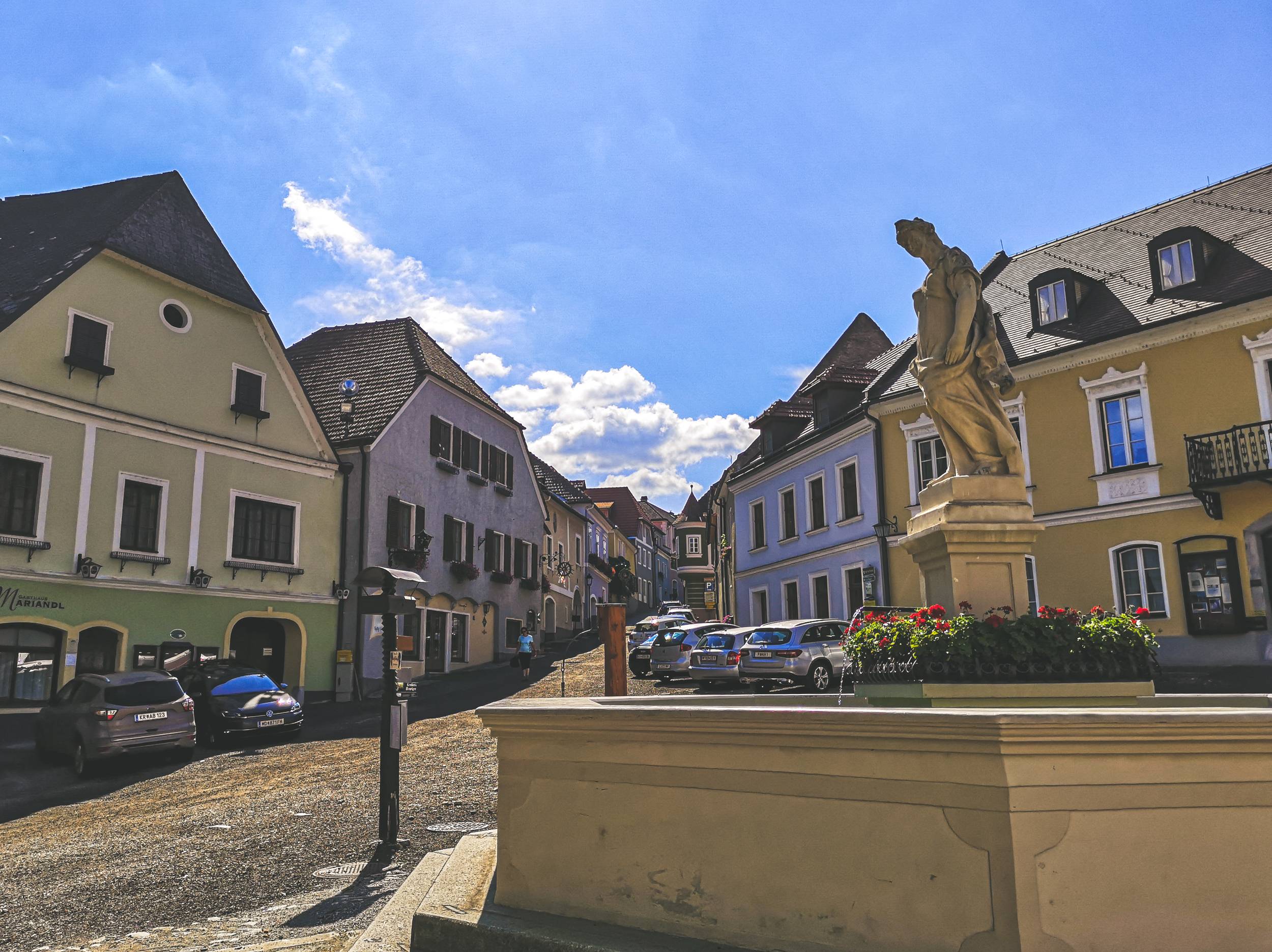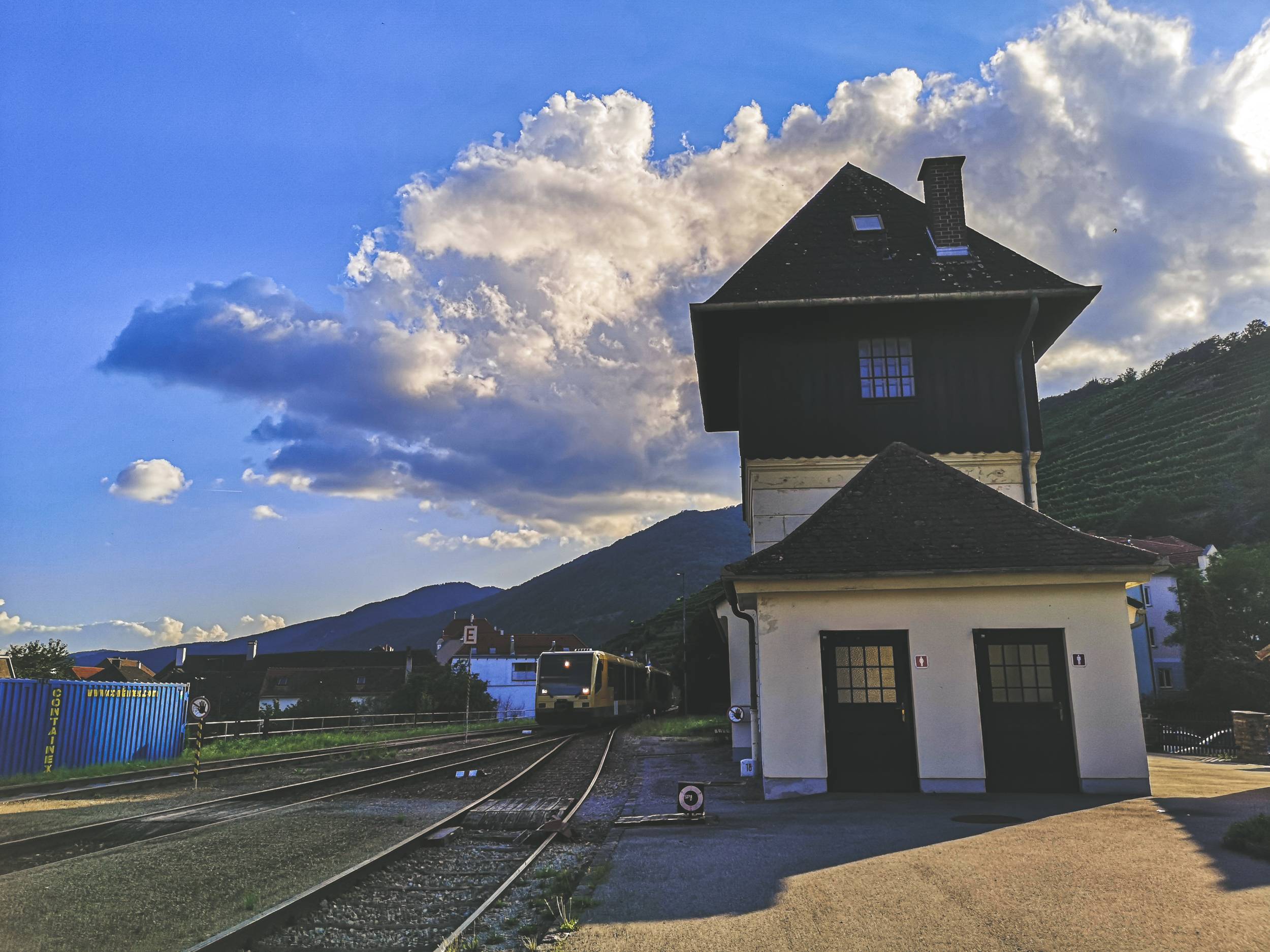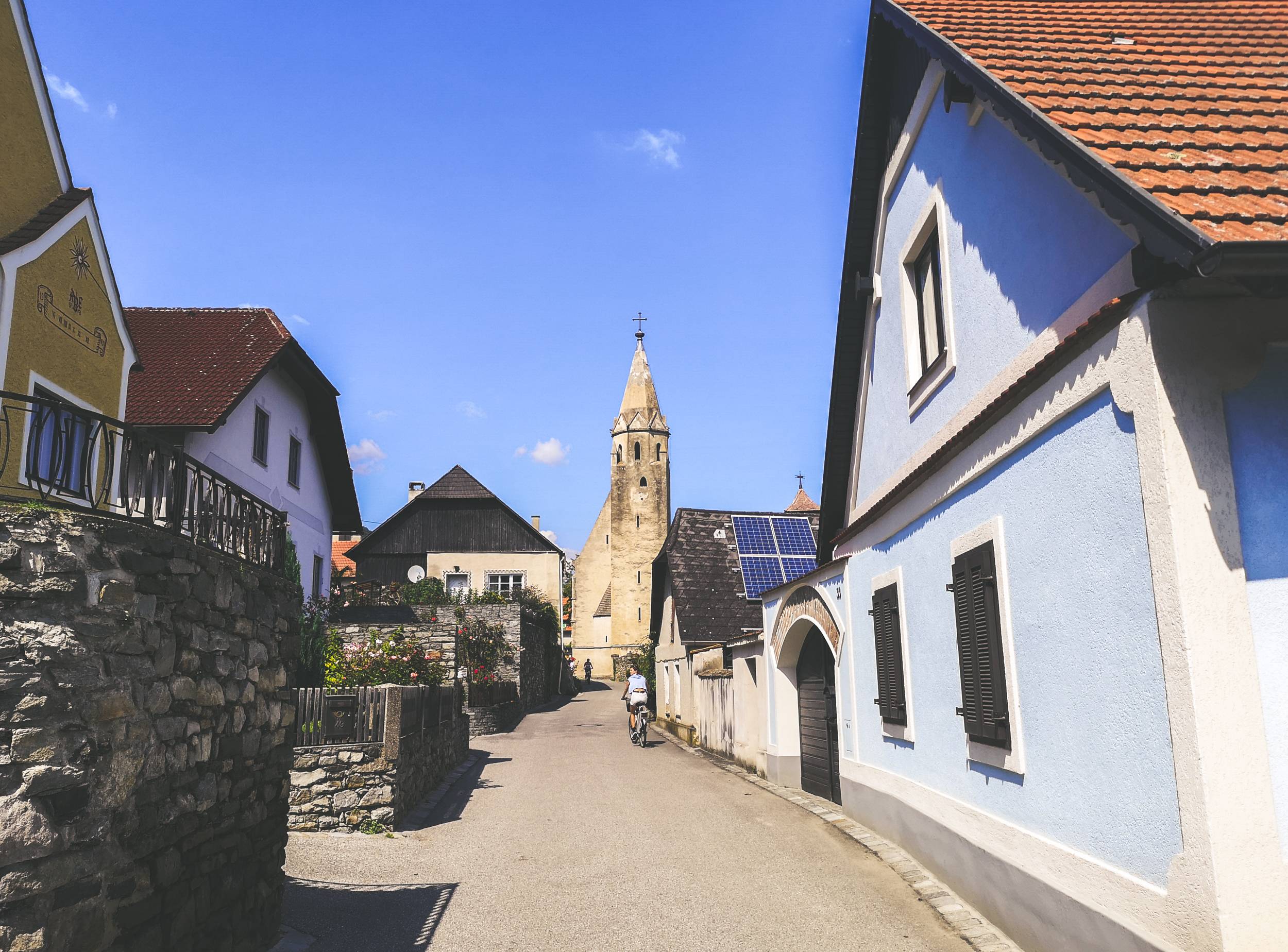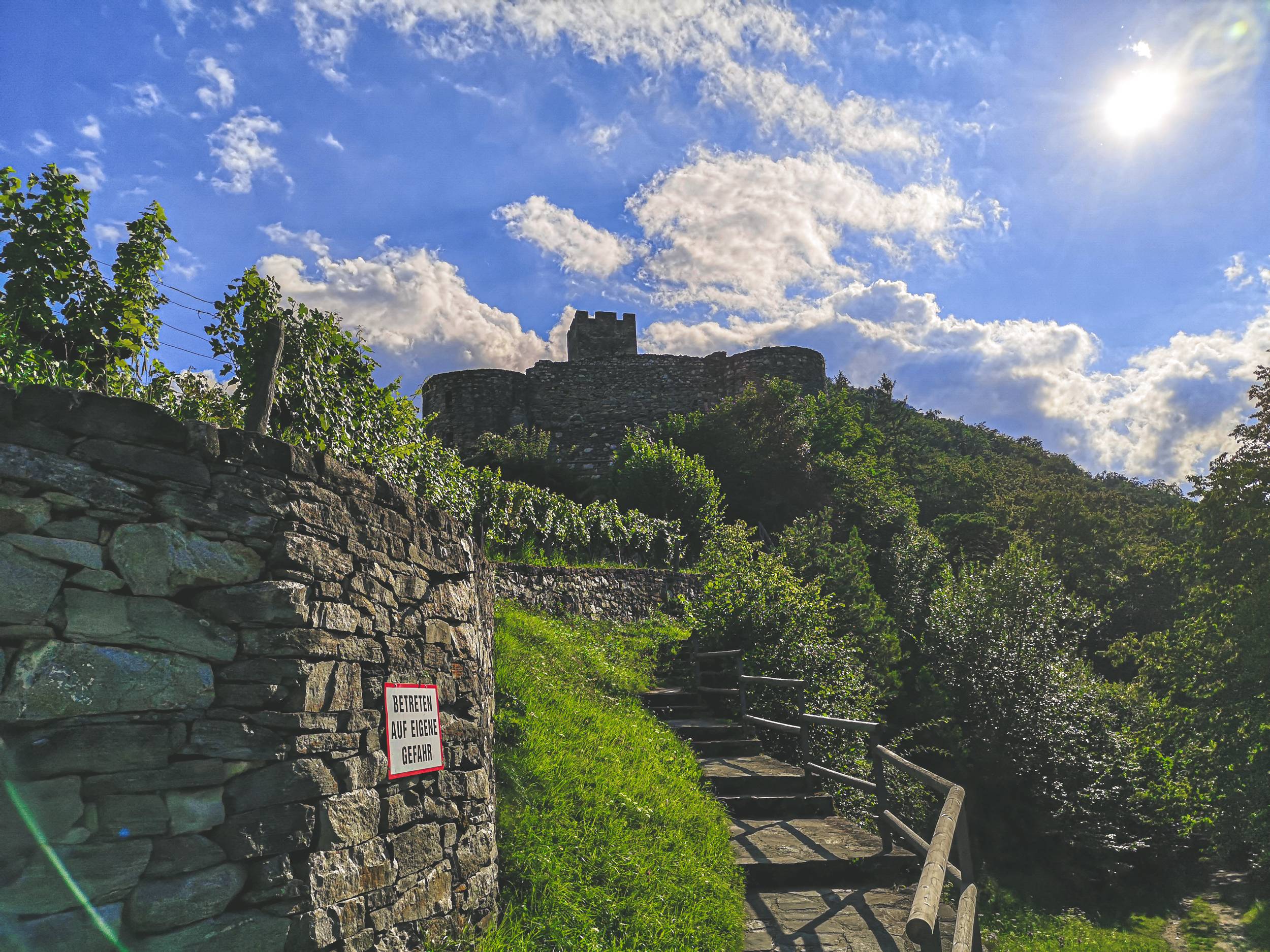August 20, 2020
Spitz Guide to History & Hiking in Wachau Valley
Active life, Culture, Guide, Hiking, History
Top attractions:
Quick Navigation
A Hidden Gem of the Wachau Valley
Anybody who ever thought of visiting Austria must have heard of the Wachau Valley. If not of the region itself, at least of the legendary Dürnstein and the God’s finger, or the iconic Melk Monastery. Both are amazing, and both have a well-deserved status as the highlights of Wachau Valley.
Nevertheless, one would miss the mark, assuming that these monasteries are all that is worth to visit in the region. Quite the contrary – neither of them captures the true spirit of Wachau Valley. It is not about the abbeys but the cultural heritage of humans, reaching the deep pre-historic times. Even these magnificent monasteries represent only a small portion of the castles situated in the valley.
It is hard to appreciate Wachau without understanding the landscape of it either. It is not the just Danube but the mountains surrounding the river. You haven’t seen the Wachau if you haven’t climbed one. Viticulture and peach farming are also quintessential for the region, and, of course, you must taste it to get the taste of the Wachau Valley.

What amazes me that everything is right in place, there is no need to go far from the popular route to see the Wachau. Photo by A.L. [CC BY-SA 4.0], via Connecting the Dots
To begin with, Melk is not even in the Domaine Wachau, and, technically, while it is possible to experience much of the region has to offer, during a day trip to Dürstein, you’ll have to deal with the unbearable masses of tourism. The town was full of people even during the early days of the 2019 pandemic, and to be honest, it is not located at the heart of Wachau either.
Spitz
I’m not trying to downplay anything. All of the towns located in Wachau Valley are mesmerizing – straight from a fairy-tale. All of them deserve attention and appreciation but if I had to pick just one to represent the region, without a doubt it would be either Weissenkirchen or Spitz.

From the Medieval ages, Spitz has been a market town. Photo by Alis Monte [CC BY-SA 4.0], via Connecting the Dots
Located right at the heart of Wachau, the town meets all the requirements of fully representing the Wachau Valley. It is hard not to be captivated by the richness of Spitz’s culture and history from the very first moments within the town. The scenery of narrow streets and the surrounding nature is so idyllic that it feels like the medieval Old Town of Spitz is just a dummy built for a Hollywood movie, or maybe it is straight out of a painting.
Wine production and heurigers are an essential part of the town. Spitz could be hardly imagined without the Tausendeimerberg, a legendary wine mountain, which is said to produce 1000 buckets of wine (56,000l, or 74,600 bottles) in bountiful years alone. The mountain is far from being the only place, where Spitzers have been cultivating fine wine for ages. As a matter of fact, Spitz is on record of viticulture for more than 1,100 years.

Tausendeimerberg (the “Hill of a Thousand Buckets”) from Hinterhaus Ruins. Photo by Alis Monte [CC BY-SA 4.0], via Connecting the Dots
I couldn’t imagine a better place to try the fine wines of Spitz, than the town itself. The life-giving taste of local Riesling, or Grüner Veltliner, could only be matched by the marvelous beauty of the surrounding landscape, from which these wines have been cultivated. The town is surrounded by green mountains and Danube looks like it is the only means of getting in and out of this dream-like environment that Spitz is. You just don’t get these sceneries within Central Europe anywhere else.

The vineyards continue far beyond Tausendeimerberg. Photo by Alis Monte [CC BY-SA 4.0], via Connecting the Dots
Spitz details
- Location: Wachau Valley
- State: Lower Austria
- Coordinates: 48.3618° N, 15.4159° E
- Distance from Vienna: 99.2km / 61.64mi
- First mentioned: 830 CE
- First settlers: 2,000 BC
- Population: 1,627 (2018)
- Area: 23.82 km² (9.2 sq mi)
- Elevation: 223m / 732ft
- UNESCO World Heritage Site: 2000
- Forecast: Spitz weather
- Accomondation: Booking.com
- Best time to visit: Mid-spring & Early Autumn
- Heuriger calendar: Heurigenkalender
Spitz an der Wachau Map

Spitz is located by a loop on the left bank of Danube river. Photo by Alis Monte [CC BY-SA 4.0], via Connecting the Dots
Best Hikes around Spitz
Tausendeimerberg Circle
It is hard to describe in a few sentences everything this short hike has to offer. Not only do you get to see Spitz itself but its vineyards and pass-by the best heurigers. It would be a sin not to make a quick stop at one and try some of the fine local white wines.
The hike around Tausendeimerberg gives a chance to see Spitz Church from afar and up close in the market square, you’ll pass the lower castle, climb to Hinterhaus ruins, with the breath-taking views of the Danube and the surrounding area.
Hike Details
- Distance: ~5km / 3.1mi
- Duration: 1h30
- Difficulty: Easy

The views from Hinterhaus Castle will blow your mind. Photo by Alis Monte [CC BY-SA 4.0], via Connecting the Dots
Spitz Red Gate Circular Hike
The hiking route takes you through Spitz Church to the Red Gate, from which the trail goes up the mountain and descends to the fortified Church of St Michael. The road by river Danube brings back you to the train station of Spitz.
Hike Details
- Distance: 7.25km / 4.5mi
- Duration: 2h15
- Difficulty: Intermediate
Hoher Stein & Aggstein Ruins Circular Hike
A long hiking trail from Spitz to Aggstein Ruins through Hoher Stein, and returns by river Danube.
- Distance: ~17.7km / ~11mi
- Duration: 5h45
- Difficulty: Hard
How to get to Spitz
Given the worldwide recognition and popularity of the Wachau Valley, it is not a surprise that the region is well-connected with the outside world. The two main connection hubs are Krems and Melk. Both could be reached within an hour by train or a car.
By train
To Melk: Every hour CJX train goes from Westbahnhof, through St Pölten.
To Krems: Every hour REX train goes from Franz Josefs Bahnhof.
Wachaubahn: The only way to navigate in the Wachau on a railway is by the privately ran train – Wachaubahn. This train is at least twice as expensive as the bus and is not that much faster. It goes about every two hours.
Pro tip: The cheapest option to travel by train in Austria is Einfach-Raus Ticket, which allows you and your friends to get on as many regional trains within a day as you want. It does not cover either buses or Wachaubahn.

Wachaubahn is a private company, thus it is not covered by ÖBB Einfach-Raus Ticket. Photo by Alis Monte [CC BY-SA 4.0], via Connecting the Dots
By bus
While I would not recommend getting to either Krems or Melk by bus, it is the cheapest way to travel throughout the Wachau Valley. The bus transit between the towns about two times an hour and takes about an hour to complete the route.
By car
To Melk: From Vienna head west between Penzing and Schönbrunn, where you enter road A1, which leads straight to Salzburg, through Melk.
To Krems: From Vienna just follow the Danube river upstream, through roads A22, S5, S33, and then 37a.
Within Wachau: There is a road on each side of Danube but Spitz is on the left bank of Danube, thus from Krems follow road 3. From Melk, you’ll require to cross the Danube river on the bridge Melker Donaubrücke (3a) to Emmersdorf and enter road 3.
By bicycle
Another popular way to travel within the Wachau Valley is cycling. 40km between Melk and Krems could be easily cycled within a day, but only if you could resist the beauty of the Wachau. You can find a full of cycling guide in Wachau in this article.

Don’t miss a chance to explore all of the villages at the heart of Wachau Valley. Photo by Alis Monte [CC BY-SA 4.0], via Connecting the Dots
By cruise
- From Krems: Wachau Valley River Cruise with 3-Course Meal (5h | € 47.90/person)
- From Vienna: Wachau and Danube Valleys Tour from Vienna (1day | € 79/person)
By tour
While there are many boats cruising Danube river through the Wachau Valley, not all of them make a stop at Spitz. This guided tour includes transportation on 8-seater Mercedes van through Dürnstein, Weissenkirchen, Spitz and a cruise from Spitz to Melk. Find more information clicking on the link below.
- From Vienna: Wachau Valley Day Tour with Wine Tasting (9h | € 129/person)

Cruise tours are the most popular way to visit the Wachau Valley by tourists. Photo by Alis Monte [CC BY-SA 4.0], via Connecting the Dots
Best Hotels in Spitz
Located in the middle between Melk and Krems, Spitz is a very good location for an accommodation. Here are some of the best hotels in the town:
- Hotel Mariandl – 3-star hotel is located on the cycling route, surrounded by vineyards of Spitz. It has free breakfast, restaurant, bar, lounge, garden, WiFi, and free private parking.
- Gasthof Prankl – Altes Schiffmeisterhaus – 3-star hotel is located beneath Hinterhause Ruins, in front of Danube beach. Gasthof Prankl dates back to 1680 and has an award-winning restaurant, free parking, free breakfast, a garden, and breath-taking views.
- Hotel Weinberghof & Weingut Lagler – 4-star hotel is located under Tausendeimerberg, at the heart of Spitz viticulture. Every room has garden views. The hotel offers a terrace, bar, sauna, breakfast, free WiFi, and free private parking.
Best Heurigers in Spitz
One of the main reasons, attracting many locals to the Wachau Region is its globally recognized fine white whites, mostly Riesling and Grüner Veltliner. There is no better place to taste them, than heurigers surrounded by vineyards. Some notable heurigers in Spitz:
- Gruber’s Heuriger has a nice terrace with awe-inspiring views. – Radlbach 5, 3620 Spitz
- Weingut Lagler – Am Hinterweg 17, 3620 Spitz
- Weingut Özelt – Kirchenpl. 3, 3620 Spitz
- Winery Thomas Gritsch – Haidgasse 1, 3620 Spitz
- Weingut Gritsch Roman – Radlbach 11, 3620 Spitz
- Weingärtnerei Helmut Donabaum – Haidgasse 10, 3620 Spitz

What is a better refreshment than a glass of local cold white wine in Wachau? Photo by Alis Monte [CC BY-SA 4.0], via Connecting the Dots
Interesting Things About Spitz
History of Spitz
The earliest archaeological evidence of settlers in the area around Spitz dates to 2,000BC. Impressive as it sounds, it wouldn’t surprise me that these dates will be dwarfed by in the future. The famous Venus of Willendorf was found just outside the territory of Spitz. So, it would be natural to assume that the area around the loop of Danube was inhabited as well.

The replica of ~28,000 years old Venus of Willendorf. The original could be seen in the Museum of Natural History in Vienna. Photo by Alis Monte [CC BY-SA 4.0], via Connecting the Dots
The written historic times of Spitz start in 830CE, when the area between Aggsbach Market and the loop, where Spitz is located was donated by Charlemagne to his grandson Ludwig the German. In turn, he put the area under the rule of Bavarian nobles. Spitz and the area around the market town remained a Bavarian enclave up until 1504. This was the setup for the upcoming bloodshed in the area.
In 1550 under foreign influences, Spitz becomes a center of the expanding Reformation. 63 years later, as the unrest was growing, a Protestant Church was built in the town. Naturally, when the Thirty Year War broke out in 1620 between Catholic and Protestant churches, Spitz got caught in the middle of it.
The Spitzers rebelled against the Catholic Habsburgs rule and in turn, they had to face severe consequences. The town was attacked and pillaged by the opposing faction several times, resulting in great losses for Spitz. As the outcome, the Protestant Church was destroyed and was never rebuilt after the war due to the Counter-Reformation in the Habsburgs Domain.

Hinterhaus Ruins are one the places left pillaged after the Thirty Years War. Photo by Alis Monte [CC BY-SA 4.0], via Connecting the Dots
The Legend of Red Gate
One of the popular places to visit in Spitz is the Red Gate. It is one of the ruins, remaining after the Thirty Years War. The legend tells about the bloody battle of those times, which happened near the gate between Spitzers and the Swedish mercenaries. The battle was so fierce and cruel that the gate got covered by crimson-red color of blood.
Legend of Teufelsmauer
Another legend tells a bit more optimistic story. Some time ago devil got annoyed by the miracles performed in the Church of St Johann at Mauerthale, and all the pilgrims seeking help. He decided to put an end to this by building a wall beyond the church by the Danube to flood it. God let him do it under one condition that he must finish it before the third croak of roosters.

The Church of St Johann marks the entrance to the Wachau. Photo by Alis Monte [CC BY-SA 4.0], via Connecting the Dots
Devil had a plan. He bought all the roosters in the region, except the ones from an old lady, living on the top of Teufelsmauer, who didn’t want to sell it for all the money in the world. Also, the prince of hell asked all the damned spirits to help him build the wall and he almost did it by the dawn but the old lady’s roosters started croaking. At first, a white one croaked three times but the devil ignored it. The black one was ignored as well, but when the red rooster got on the top of the church and crowed three times, the devil had to stop.
Furious with his failure, the devil shot an arrow at the rooster and went back to hell. To this day, the rooster with an arrow could be seen on the top of the Church of St Johann, and the interesting rock formation just before Spitz is known as “the Devil’s wall”.

I would list climbing Hinterhaus Ruins among the top activities in the Wachau Valley. [CC BY-SA 4.0], via Connecting the Dots
Personal Experience
I bet there are more stories to uncover in Spitz as this town doesn’t stop to surprise me every time I visit the area. While the locals know to appreciate Spitz and the nearby villages at the heart of the Wachau Valley, tourists tend to miss the mark of the region. Both Melk and Dürnstein are great and deserve a journey of their own but the real flavour of Wachau could be only truly experienced at the heart of it.
